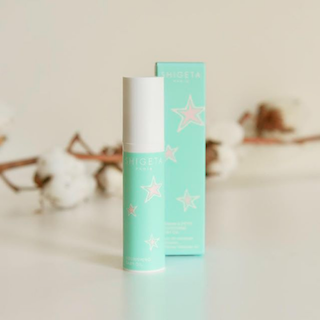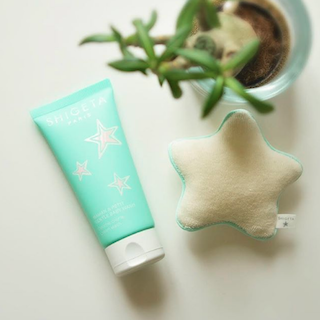Take care of the infant’s skin
The infant skin is physiologically different from the adult skin (read: Infant’s skin). That’s why specific care is necessary to preserve their fragile skin from irritations and ensure its healthy development.
Infant hygiene
Washing products
Cosmetic hygiene products can have an influence on the still immature infant skin.1
A cleansing product is composed of molecules called surfactants whose role is to capture dirt so that it is removed from the skin during rinsing. But these molecules also have the ability to bind to lipids. Thus, the most aggressive surfactants (such as sodium laureth sulfate, sodium lauryl sulfate, ammonium lauryl sulfate) will remove lipids from the skin at the same time as dirt. However, in infants, the production of sebum is still immature and the composition of the skin in lipids is fragile.
The use of aggressive surfactants in children can then, by eliminating lipids, increase skin permeability and cause skin dryness or even severe irritation such as contact dermatitis.
It is therefore recommended to choose products containing mild surfactants such as coco glucoside, disodium cocoyl glutamate or sodium cocoyl glutamate for washing children. These surfactants are composed of fatty acids derived from coconut, linked to sugars or amino acids. Once applied, they are likely to be cleaved by enzymes from the skin to release fatty acids that will strengthen the skin barrier on the one hand, and sugars or amino acids that will help preserve skin hydration on the other.
Thus, the use of gentle surfactants allows a gentle cleansing of the baby’s skin without removing too much lipids and even bringing the lipids that are missing to the epidermis, thus improving its hydration.
Watch out for soap
The newborn’s skin is also more alkaline than adult skin during the first weeks of life (read Infant’s skin). Its acidification is an essential process allowing the formation of an acid mantle which will facilitate the anchoring of the cutaneous microbiota.
It is therefore important that products used daily on infant skin have an acidic pH close to that of adult skin (pH 4-5) to help build the acid mantle. Thus, the use of soap is not recommended for fragile skin, because in addition to its alkaline pH (pH 9) it removes 93% of skin lipids2, which promotes its drying.
Frequency of washes
The frequency of washing a newborn should be reasonable. A consensus among health professionals recommends not washing infants more than twice a week when they are very young, as they do not move or sweat too much.1
The reduction in bathing frequency for newborns has been studied and associated with an improvement in their skin condition.2 Of course, it is important to keep the baby’s face and buttocks clean every day.3
The skin care
After bathing, it is important to protect and moisturize the skin by applying a specific oil or care product. Vegetable oils, in addition to creating a unique bond with the infant during the massage, will provide the skin with important fatty acids to strengthen its composition. Main fatty acids of a healthy epidermis, linoleic, palmitic, and oleic acids can be brought to the skin of the child by vegetable oils like jojoba, cotton, baobab or sunflower oil. By strengthening the lipid layer, these oils improve the skin’s barrier function, which is therefore better hydrated and soothed.
General advice
When washing the child, it is best to use hands or a soft sponge and not to rub the skin too much using lukewarm water. Limiting bathing time is also beneficial. For drying, dab the skin gently rather than rubbing it.
Finally, it is very important to protect children from the sun (sunglasses, hat, covering clothing and sun protection) when going outdoors. Prefer the use of mineral sunscreens to protect them and thus avoid any allergenic and irritating risk.

Discover our products





